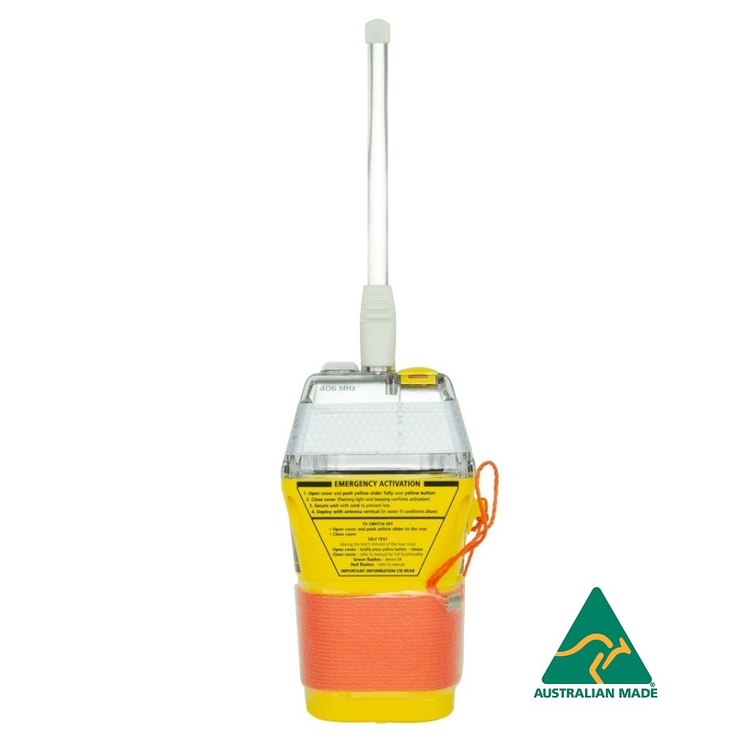What is An Emergency Position Indicating Radio Beacon (EPIRB)? 312
by Admin
Posted on 31-10-2023 12:37 PM

emergency
position indicating radio beacon (epirb) is a device to alert search and rescue services (sar) in case of an emergency out at sea. It is tracking equipment that transmits a signal on a specified band to locate a lifeboat, life raft, ship or people in distress.
 They are installed on ships and other vessels after being registered with the national search and rescue forces to that boat. The registration allows confirmation of false alerts faster and quick rescue operations in case of emergencies. An epirb is a secondary means of distress alerting, which is to say that it comes later in the hierarchy of alerting sar authorities in case of distress.
They are installed on ships and other vessels after being registered with the national search and rescue forces to that boat. The registration allows confirmation of false alerts faster and quick rescue operations in case of emergencies. An epirb is a secondary means of distress alerting, which is to say that it comes later in the hierarchy of alerting sar authorities in case of distress.
In a world where technology has revolutionized the way we communicate and navigate, safety at sea or in remote wilderness areas remains a paramount concern. Whether you’re a seasoned mariner, an adventurer exploring remote regions, or simply someone who enjoys spending time outdoors, understanding the importance of an emergency position indicating radio beacon (epirb) can be a lifesaving endeavour. An epirb, short for emergency position indicating radio beacon, is a compact, self-contained device designed to transmit a distress signal to search and rescue authorities in the event of a life-threatening emergency. These emergencies can occur at sea, on land, or in remote areas where traditional forms of communication may be limited or unavailable.
Beginning january 1, 2007, both 121. 5 and 243 mhz emergency position indicating radio beacons (epirbs) are prohibited from use in both commercial and recreational watercraft. Boaters wishing to have an emergency rescue beacon aboard their vessel must have a digital 406 mhz model. The january 1, 2007, date to stop using 121. 5 mhz epirbs is in preparation for february 1, 2009, when satellite processing of distress signals from all 121. 5/243 mhz beacons will terminate. Following this termination date, only the 406 mhz beacons will be detected by the international cospas-sarsat satellite system which provides distress alert and location data for search and rescue operations around the world.
Epirb is one of three main types of radio beacons that are used in emergency situations for search and rescue. Epirbs (emergency position indicating radio beacons) for maritime use elts (emergency locator transmitters) for aviation use plbs (personal locator beacons) for personal use (in a remote environment) all of them - epirbs, elts and plbs - operate within a satellite-based system at a frequency of 406 megahertz. This frequency has been designated internationally for use only in distress. Also, emergency beacons should be equipped with a 121. 5 mhz radio transmitter. A low-power 121. 5 mhz homing signal is used to guide rescue services when they are within 10 miles away from the beacon.
How Does An EPIRB Work?
An epirb is an emergency position indicating radio beacon, which is a device that is used at sea to alert search and rescue services (sar) in distress or an emergency. Working in a similar way to a plb, an epirb is installed on vessels and are registered to a specific boat, rather than a person, via the national search and rescue organisation. In most countries, it is mandatory for all commercial vessels to have an epirb registered.

An epirb or eme rgency position indicating radio beacon is a distress beacon for boaters that when activated alerts a worldwide search and rescue (sar) network designed to send rescuers to your exact location quickly.
Maritime nz has had feedback that some people find the following terms confusing when used to describe how an epirb works. ‘floating’ and ‘float-free’ epirbs required by the maritime rules must be watertight and capable of floating when put in water. However, this does not mean the epirb is a ‘float-free epirb’. ‘float-free’ refers to the bracket the epirb sits in, not the epirb itself. See ‘float-free epirb’ above for more information ‘released’ and ‘activated’ ‘released’ means the epirb is removed from its bracket (manually or automatically). Sometimes the word ‘deployed’ is used instead of ‘released’. ‘activated’ means the epirb is switched on.